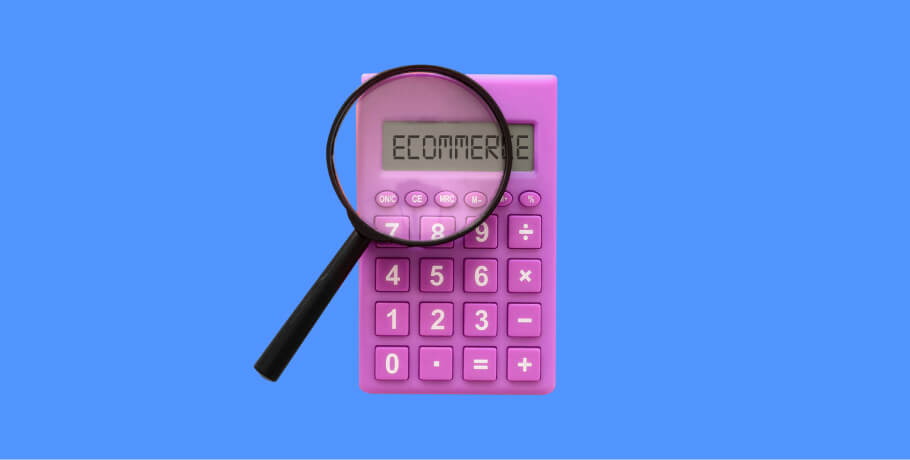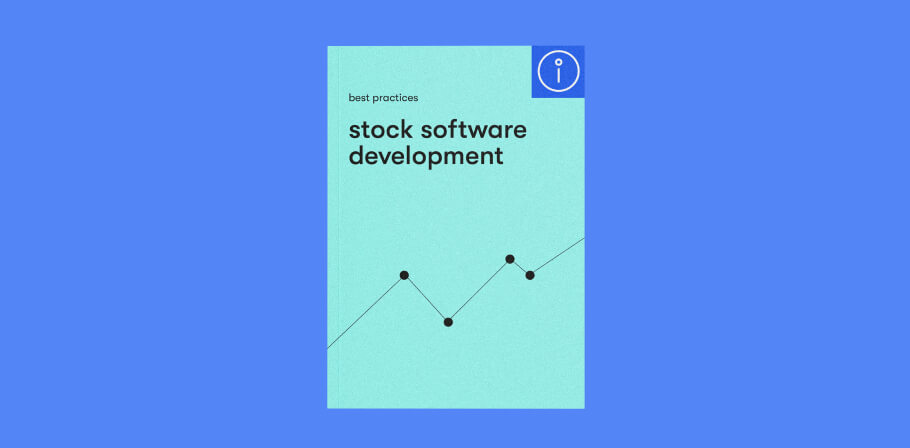In the era of digital transformation in banking where customers are moving away from the physical bank branch to tech-focused alternatives, creating a money transfer app has become a crucial endeavor for businesses aiming to stay ahead in the financial technology landscape. But figuring out how to make it happen isn’t always intuitive.
Fortunately, with the right strategy, it’s possible to build the money transfer app you envision. Whether you're a startup or an established financial institution, this walk-through will equip you with the knowledge to embark on this exciting journey. Get ready to transform your digital banking idea into a reality as you learn how to create a money transfer app and set new standards in the world of financial technology.
What is money transfer software?
Money transfer software is a type of financial application developed specifically for the seamless transfer of funds between individuals or entities across various platforms. This technology is a cornerstone in IT for banks, facilitating the digital transformation of traditional banking services into accessible, user-centric solutions.
Examples of such software include well-known applications like PayPal, Venmo, and Zelle, which have revolutionized the way we send and receive money, making transactions instantaneous and secure. Additionally, specialized platforms like Wise (formerly TransferWise) and WorldRemit cater to international money transfer solutions, offering competitive exchange rates and lower fees.
These applications highlight the significant role banking technology plays in modernizing financial transactions, ensuring efficiency, security, and user satisfaction in the digital age. Through the integration of advanced technologies, money transfer software continues to evolve, setting new standards for convenience and reliability in the financial sector.
Money transfer app development: is it a feasible idea?
Before you worry about how to build a money transfer app, it’s best to determine if it’s a wise investment. Ultimately, developing a money transfer app in today's digital era can be a highly reliable and promising venture, especially when considering the evolving banking industry challenges. The increasing demand for digital financial services – including new, more affordable ways to transfer funds – coupled with the need for secure, efficient, and user-friendly banking solutions, presents a unique opportunity for innovation in this space.
By addressing these challenges head-on when you create a money transfer app, you can offer a valuable solution to consumers and businesses looking to transfer money, streamlining transactions and enhancing the overall banking experience. Plus, with the right approach to security, compliance, and user experience during money transfer app development, an app can successfully navigate the complexities of the financial sector and emerge as a critical tool in the digital banking ecosystem. As a result, the idea of developing a money transfer app not only holds promise but also the potential to transform the way financial transactions are conducted in the face of the current banking industry challenges.
DEVELOP YOUR MONEY TRANSFER APP WITH US
Get access to top fintech engineers and our 15+ years of track record in the financial services industry. Free consultation included.
The main features of money transfer apps
When delving into how to create a money transfer app, it's crucial to incorporate a range of features that cater to user needs and enhance the overall experience. Here's a breakdown of the must-have features for any successful money transfer application.
Bill payments
Bill payments are a fundamental component, allowing users to conveniently pay for utilities, credit cards, and other services directly from the app. This feature not only adds to the app's versatility but also ensures regular user engagement, making it an indispensable tool for managing financial obligations.
E-wallets
E-wallets enable users to store electronic money securely within the app, facilitating swift transactions without the need for physical cards. This feature enhances the app's usability, providing a seamless way for transferring money to peers or paying for services directly from the smartphone.
Online ID check
Implementing an online ID check ensures secure user verification, a critical aspect of maintaining trust and safety within the app. This feature is essential in preventing fraud and complying with financial regulations, making it a cornerstone of any money transfer application.
Payment statistics
Payment statistics offer users valuable insights into their spending habits and transaction history, fostering better financial management. By integrating this feature, app developers can enhance user engagement, providing a personalized experience that goes beyond mere transactions.
Transaction notifications
Real-time transaction notifications keep users informed about their account activity, adding an extra layer of security and convenience. This feature is pivotal in ensuring users are always up-to-date with their financial transactions, making it a must-have for any money transfer app.
International transfers
For users needing to send money across borders, international transfers are a key feature, enabling them to send funds to different countries quickly and efficiently. This capability is particularly crucial for a money transfer app catering to a global audience.
Currency exchange
A built-in currency exchange feature provides users with the ability to convert funds into different currencies, which is essential for international money transfers. Offering competitive exchange rates within the app can significantly enhance user satisfaction, especially for those frequently engaging in cross-border transactions.
Multilingual interface
A multilingual interface ensures the app is accessible to a broader audience, breaking down language barriers and enhancing the user experience. This feature is particularly crucial for money transfer apps that serve diverse, international user bases, functionally creating a user-friendly interface more effectively by supporting an array of languages.
Support
Robust customer support is essential for addressing user queries and concerns, ensuring a positive experience with the app. Whether through live chat, email, or phone support, providing timely and helpful assistance is key to maintaining user trust and satisfaction.
Integrations
Integrating with other financial services and apps, such as Apple Pay or banking apps, can extend the app's functionality, offering users a more comprehensive financial tool. These integrations are crucial for money transfer app development, enabling a seamless ecosystem where users can manage all their financial needs in one place.
How to create a money transfer application, step by step
Creating a money transfer application is a complex process that involves several critical stages, each contributing to the app's functionality, security, and user experience. When it comes to how to create a money transfer app, the development process begins with a comprehensive discovery stage, followed by the design of the UX/UI concept and the selection of the appropriate app development approach. It's crucial to include robust user management modules, advanced reporting and accounting features, and, most importantly, stringent security measures to protect against the increasing threats in cybersecurity in banking. This step-by-step guide aims to provide a roadmap for entrepreneurs and businesses on how to start a money transfer app, from conceptualization to launch.
The journey of how to make a money transfer app requires careful planning and execution. Each step of the process, from the initial market research to the final launch, must be meticulously managed to ensure the app meets both user needs and regulatory requirements. With the rise of online banking security concerns, developers must prioritize the protection of user data and transactions throughout the money transfer app development process. By following these guidelines on how to create international money transfer app solutions, you can build a money transfer app that not only serves the basic needs of sending and receiving money but also offers added value through features like bill paying, currency exchange, and more.
Discovery stage
The discovery stage is the foundation of how to create an app for money transfer, how to make a peer-to-peer money transfer app, or tackle any other kind of application of this nature. You’ll perform thorough market research to understand the needs of your target audience and identify the competitive advantage your app can offer. This involves analyzing existing money transfer applications, understanding their key features, and identifying gaps that your app can fill. It's also crucial to study the regulatory landscape, especially if you're looking to create an international money transfer app to ensure compliance with global financial regulations.
In this phase, you should also define the core features of your app, such as the ability to transfer money between bank accounts, pay bills online, and perform currency exchanges. This is also the time to consider the tech stack that will power your app, taking into account scalability, security, and performance requirements. The insights gained during the discovery stage will guide the entire product development process, ensuring your app meets the market needs and stands out among competitors.
Additionally, the discovery stage should involve potential users to gather feedback on the proposed features and functionality. This user-centric approach ensures that the final product will offer a seamless user experience, meeting the practical needs of those who will be sending money, receiving money, or performing banking transactions of a similar nature through the app.
UX/UI concept
The design phase as you’re determining how to create a P2P money transfer app involves focusing on the UX/UI concept, is where you translate the insights from the discovery stage into a visually appealing and intuitive interface. The goal is to create a user-centric design that simplifies the process of money transfers, making it possible for a user to perform transactions with just a few taps on their mobile device. This involves crafting an intuitive navigation system, clear call-to-action buttons, and an overall aesthetic that reflects the brand identity.
The UX design should prioritize the ease of performing core actions such as transferring funds, checking transaction history, and receiving push notifications for account activity. It's essential to consider the various user scenarios, including sending money to a bank account, paying bills, or using electronic wallets for cashless payment methods. The design phase should include prototyping and usability testing to refine the interface based on real feedback, ensuring the app's usability and effectiveness.
In addition to the user experience, the UI design plays a critical role in engaging users. This involves selecting the right color schemes, typography, and graphical elements that make the app not only functional but also visually appealing. The UI should reinforce the trustworthiness and reliability of your money transfer platform, encouraging users to adopt your app for their financial transactions.
Development approach
Choosing the right development approach when building a money transfer solution is crucial for the success of your custom money transfer application. Whether you opt for in-house development, software development outsourcing, or a hybrid model, the approach should align with your project's scale, budget, and timeline. Agile methodologies are often favored in app development, allowing for flexibility, iterative progress, and continuous feedback incorporation.
The tech stack selection is another pivotal decision in this phase, involving choices about frontend and backend technologies, databases, and third-party services integration. For a money transfer application, the tech stack must ensure high performance, scalability, and security, accommodating features like anti-money laundering checks and two-factor authentication for added user protection.
Collaboration between developers, designers, and product managers is key to addressing the technical and user experience aspects of the app. Regular sprint meetings, code reviews, and testing sessions help maintain development momentum and ensure alignment with the project goals. This collaborative environment fosters innovation and problem-solving, ensuring development leads to a robust and reliable money transfer app.
User management modules
User management modules are essential for maintaining a secure and organized environment where users can easily manage their profiles, bank accounts, and transaction settings when you’re building a money transfer solution for any or all of the types of money transfer options. These modules should offer straightforward functionalities for account creation, profile customization, and bank or credit card linking. Ensuring a smooth and secure onboarding process is crucial for first-time users, making it imperative to streamline identity verification and account setup procedures.
The modules in the payment app should also provide users with the tools to manage their privacy settings and control how their data is used. This is particularly important in the context of online banking services in mobile transfer apps, where data security and user autonomy are paramount. Implementing features like customizable notification preferences and account security settings can enhance user satisfaction and trust in the app.
Moreover, advanced user management capabilities can include personalized financial insights, offering users a detailed view of their spending patterns, transaction history, and financial health. By empowering users with this information, your app can provide more than just a transactional platform, evolving into a comprehensive tool for financial management and planning.
Reporting and accounting
For a money transfer app to be effective, it must include robust reporting and accounting features that allow both users and administrators to track transactions in real time. Users should have access to detailed transaction histories, including dates, amounts, recipients, and the status of each transfer. This transparency is crucial for building trust and ensuring users feel in control of their financial activities.
From an administrative perspective, the app should offer comprehensive reporting tools to monitor app usage, transaction volumes, and user behaviors. These insights are invaluable for identifying trends, optimizing app performance, and making informed decisions about future updates and features. Implementing dashboards with real-time analytics can greatly enhance the app's operational efficiency and responsiveness to user needs.
Additionally, integrating accounting functionalities can help users and businesses manage their finances more effectively. Features such as automated invoice generation, expense tracking, and financial reporting can add significant value, making the app a versatile tool for personal and business financial management. This integration of money transfer capabilities with broader financial management tools can set your app apart in a crowded market.
Security
Security is the cornerstone of any successful money transfer app, given the sensitive nature of banking transactions and the increasing threats of cybersecurity in banking. Implementing robust security measures, such as data encryption, secure socket layers (SSL), and regular security audits, is non-negotiable to protect user data and prevent unauthorized access. Incorporating two-factor authentication, biometric verification, and anti-fraud algorithms can significantly enhance the app's security framework.
Beyond technical measures for security, money transfer applications should focus on educating users about online banking security practices, as it’s crucial for minimizing risks. Providing resources and tips on creating strong passwords, recognizing phishing attempts, and securing personal devices can empower users to contribute to the app's overall security. A proactive approach to security not only protects users but also reinforces the app's reputation as a trustworthy platform for money transfer services.
Furthermore, compliance with financial regulations and standards, such as the Payment Card Industry Data Security Standard (PCI DSS) and the General Data Protection Regulation (GDPR), is essential for legal and operational integrity. Staying abreast of regulatory changes and adapting the app's security measures accordingly ensures long-term sustainability and user trust. Investing in security is not just a technical requirement but a fundamental aspect of building a reliable and respected money transfer platform.
GET YOUR FINTECH APP TO MARKET FASTER
We provide full-cycle fintech app development services, solving your challenges with expert consulting along the way.
How much does it cost to build a custom money transfer app?
Estimating the cost to build a money transfer app involves considering various factors that contribute to the overall development expenses. The application's features are one of the primary cost drivers; the more numerous or comprehensive the features, such as allowing users to send and receive international money transfers, supporting currency exchange, and offering advanced security protocols, the higher the development cost. Each additional feature requires more time for design, development, and testing, which in turn increases the overall budget.
| type of application | cost estimates (market averages) |
| a basic MVP | $30,000-$40,000 |
| an MVP with extended features | $50,000-100,000 |
| a full-fledged product with basic features | $100,000-$150,000 |
| a full-fledged product with advanced features (AI integration, big data analytics) | $150,000-$300,000 |
USE OUR COST CALCULATOR TO ESTIMATE YOUR PROJECT
Get personalized cost estimates for your mobile transfer app in a few clicks.
An app's complexity goes hand in hand with its features. A simple app with basic send-and-receive money functionality will cost significantly less than the one offering multiple money transfer options or a comprehensive suite of financial services, including bill payment services, multiple currency support, and integration with various banking systems. The complexity not only affects the development time but also demands a more skilled and, therefore, more expensive development team.
The chosen platform (iOS, Android, or both) significantly impacts the development cost. Developing for multiple platforms simultaneously using a cross-platform approach can reduce costs but might compromise performance and user experience compared to native development. On the other hand, native development ensures a streamlined user experience and optimal performance on each platform but requires developing separate apps for iOS and Android, which doubles the effort and cost.
The tech stack, or the set of technologies used to build the app, also influences the cost. Modern, efficient, but complex technologies might expedite development but require specialized, higher-paid developers. Additionally, the use of third-party services for features like SMS verification, currency conversion rates, or payment processing can add to the operational costs of the app.
Finally, the composition of the development team plays a significant role in determining the cost. Often, in-demand skills are costly to secure, particularly when hiring permanent employees. Fortunately, businesses can mitigate these costs by using strategic approaches that allow them to augment their team on a project basis.
Conclusion
Ultimately, the journey of developing a customized money transfer app is intricate and multifaceted, involving careful planning, strategic decision-making, and meticulous execution. From the initial discovery stage through to the final security measures, each step of the process is critical in shaping a successful, secure, and user-friendly platform. The integration of must-have features such as bill payments, international transfers, and advanced security protocols, tailored to meet the unique needs of the target audience, sets the foundation for an app that not only facilitates seamless financial transactions but also enhances the overall banking experience for users.
Plus, understanding the financial and resource investment required to bring a money transfer app to life is crucial for any business venturing into this space. Factors like app complexity, chosen platforms, tech stack, and the development team's location play significant roles in determining the overall cost. Balancing these elements while ensuring the app remains competitive and compliant with the ever-evolving landscape of online banking security is paramount. With the right approach and dedication, building a mobile money transfer app can offer a substantial return on investment, tapping into the growing demand for digital financial services and revolutionizing the way we manage our money.
FAQ

Anush has a history of planning and executing digital communications strategies with a focus on technology partnerships, tech buying advice for small companies, and remote team collaboration insights. At EPAM Startups & SMBs, Anush works closely with subject matter experts to share first-hand expertise on making software engineering collaboration a success for all parties involved.
Anush has a history of planning and executing digital communications strategies with a focus on technology partnerships, tech buying advice for small companies, and remote team collaboration insights. At EPAM Startups & SMBs, Anush works closely with subject matter experts to share first-hand expertise on making software engineering collaboration a success for all parties involved.
Explore our Editorial Policy to learn more about our standards for content creation.
read more

















